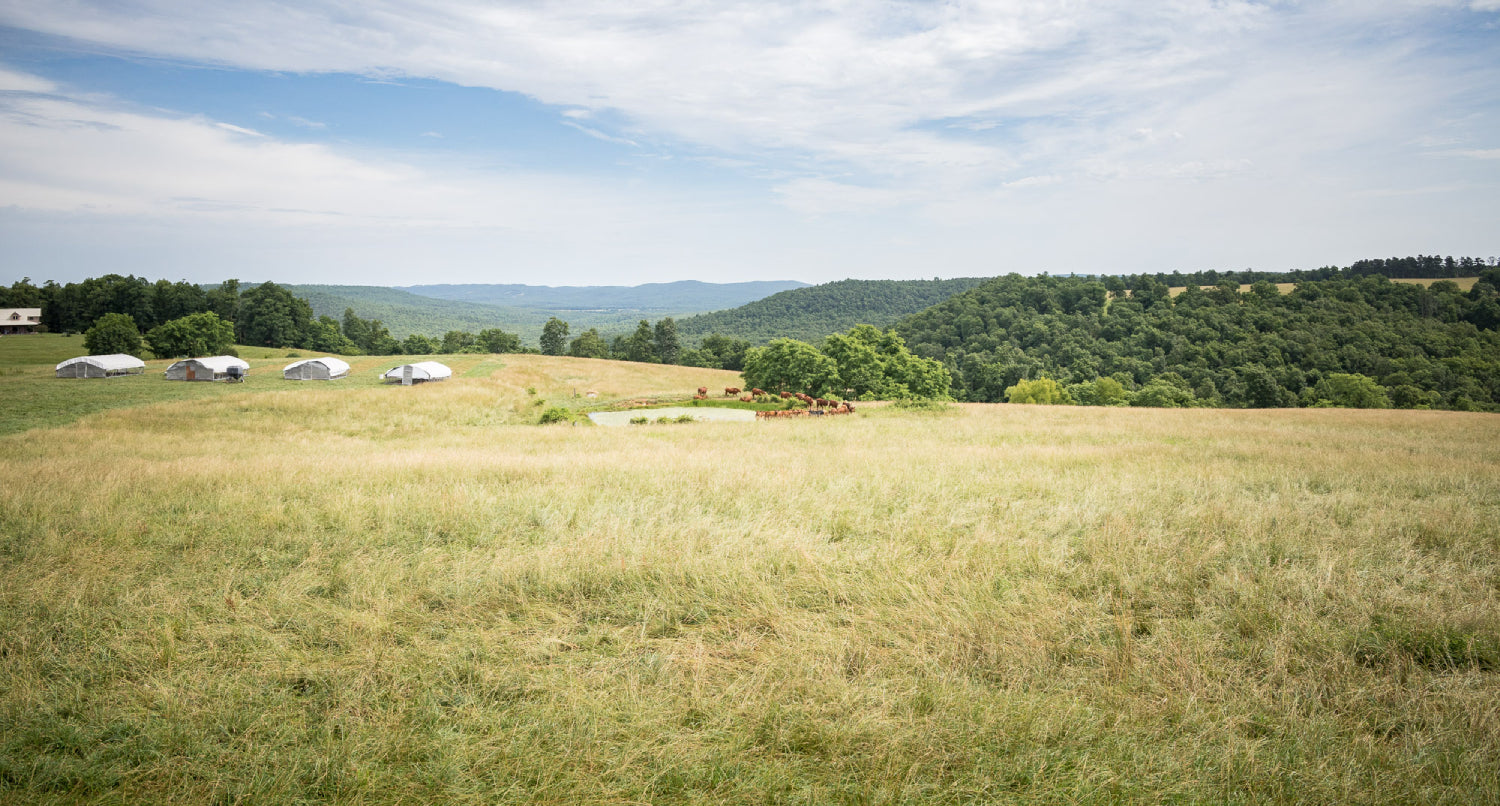Razing the Amazon: How Cattle Ranching Destroys, and Regenerative Agriculture Restores

Deforestation in the Amazon is a local issue with global implications
Transparency is everything. At Grass Roots, we believe you deserve to know exactly where your food comes from—so you can make informed choices and feel confident in what’s on your plate. That’s why we put the name of the farm on every package and maintain an open-farm policy.
But not every company feels the same way. Would you still buy beef if it came from the Amazon rainforest—or, more accurately, from what’s left of it? What if we told you that beef sold at major retailers like Walmart, Costco, and Kroger could be linked to deforestation in vulnerable ecosystems? Take JBS, for example. As one of the world’s largest meat suppliers, they’re responsible for 22% of the beef consumed in the U.S., and every day, they clear an area the size of one football field in Brazil to produce it.
The Amazon Rainforest is often called the "lungs of the Earth," absorbing carbon and producing oxygen. Its destruction worsens global warming and disrupts weather patterns worldwide. Large-scale cattle ranching is driving the destruction of ecosystems worldwide, but particularly in the Amazon. This practice has devastating environmental, social, and economic consequences.
Here’s how conventional large-scale farming in this sacred forest harms our planet:
Deforestation: In the Amazon, vast forests are bulldozed to create grazing land for cattle. This is a leading cause of deforestation, with about 80% of Amazonian forest loss tied to agriculture, mostly cattle ranching.
Loss of Biodiversity: Clearing forests for cattle decimates habitats, threatening species and accelerating extinction. The Amazon alone is home to 10% of the world’s species. Even partial deforestation disrupts ecosystems, making it harder for wildlife to migrate, find food, and reproduce.
Carbon Emissions: When forests are cleared, stored carbon is released into the atmosphere, fueling climate change. Amazon deforestation accounts for 10% of global emissions.
Soil Degradation: Large stationary herds of cattle cause soil compaction and erosion, reducing fertility and making the land harder to restore. Compacted soil also leads to nutrient loss, increasing the need for more land—and more forest clearing.
Water Pollution: Runoff from cattle farms often carries harmful chemicals, sediment, and nutrients into nearby water sources, threatening aquatic ecosystems and local water quality.
Impact on Indigenous Communities: Ranching drives Indigenous peoples off their land, stripping them of their livelihoods, culture, and access to resources like clean water and forests.
Loss of Ecosystem Services: Forests provide vital ecosystem services like regulating water cycles and preventing erosion. Cattle ranching disrupts these functions, harming both local and global ecosystems.
Large-scale cattle ranching is driving deforestation, biodiversity loss, climate change, water and pollution in this vital part of our planet. It's an inefficient use of land and resources, contributing to unsustainable food production. But, while farming has been the cause of destruction in the rainforest, farming could also be the solution.
Regenerative farming could play a significant role in helping prevent deforestation in the Amazon, Here’s how:
Reducing the Need for New Land: One of the key tenets of regenerative agriculture is to increase the productivity of existing farmland without expanding into new areas. By restoring soil health and using sustainable practices (such as agroforestry, cover cropping, and crop rotation), farmers can potentially grow more on the same land, reducing the pressure to clear new forests for agriculture.
Building Resilient and Sustainable Systems: Regenerative agriculture emphasizes creating farming systems that work with nature rather than against it. By prioritizing biodiversity, water retention, and ecosystem services, regenerative systems may make it economically more viable for farmers in Amazonian regions to keep forests intact rather than clear them for agriculture.
Restoration of Degraded Lands: Another crucial aspect of regenerative agriculture is its focus on rehabilitating degraded lands. Regenerative practices can help restore soil fertility and moisture, making previously unproductive lands viable again for farming.
Soil-building techniques used in regenerative agriculture (such as no-till farming, cover crops, and composting) could restore the productivity of land that's already been cleared, reducing the need to encroach on the forest.
Cultural and Ecological Preservation: Many Indigenous groups in the Amazon have historically practiced agroforestry and land management techniques that align with regenerative agriculture. Supporting these communities and integrating traditional knowledge into modern regenerative practices could help protect forests while providing sustainable livelihoods.
Regenerative practices work to build ecological resilience, which can help forests and agricultural systems better withstand the pressures of climate change, droughts, and flooding — common threats to both the Amazon and the livelihoods of local farmers.
At Grass Roots, you can feel confident that the beef on your plate supports forests, not destroys them. Your purchase supports small farms and strengthens rural American communities. And every delicious bite was raised right here in the U.S., using regenerative practices that protect the land for generations to come.
Grass Roots is on a mission to change the way that America eats and the way America farms. But it doesn’t have to stop there. Consumers have the choice every day to vote with their dollar for systems that build up our world and our global communities. As members of this planet, we encourage you to support sustainable agriculture here at home and everywhere!
Happy eating, always!



